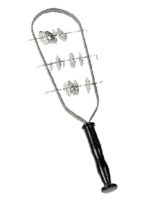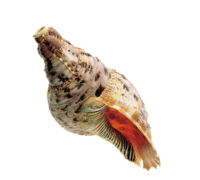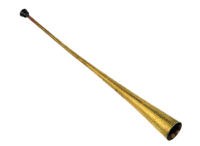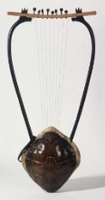
TERPANDROS
Cyprus Orchestra Of Greek Ancient Intruments
At times when man is exhausted by the conditions of universal globalisation, there is an absolute need to take refuge in the roots of ancient Greek education and in the entirety of its harmony, where philosophy and music, in man's relationship with the gods, gave, 2500 years ago, unique moments of spiritual self-sufficiency and intellectual delight.
Our ancient forebears attributed magic powers to sound and thought that the origin of music was not an invention of human beings but was discovered by men or was given to them by supernatural beings. They believed that the power of sound holds sway over the natural world, influencing and protecting human life. It is precisely this belief in the magic of sound that determines the dual nature of music.
They divided music into "esoteric", the music of the gods, which was intelligible only to a closed circle of initiates, and "exoteric", which was the music of men. Exoteric music was used as a means of entertaining and delighting the soul and also as a means of communication with the divine. This music of men included folk music, artistic music and music which was designed for public, religious and other ceremonies, in contrast, the musical forms of esoterism were determined by the relationship of man with the harmony of the universe. Using various materials, they made musical instruments whose sound moved out of the physical plane and passed into the spectrum of esoterism. By playing music with these instruments they could bring harmony to the mind and body of man. Asclepios used this music for therapeutic purposes and for putting his patients to sleep before operations. Pythagoras set free the mind of his pupils from the cares of daily life by playing them music that calmed the mind and induced deep sleep. The mythical Orpheus, the son of Apollo, tamed the wild creatures of the forest and moved the gods solely by the power of the sound of his lyre.
Through the philosophy of esoterism, music helps us to overcome the anxiety we feel in a world that is often hostile. It lifts our spirits and confirms the existence of harmony in the universe.
My research into the reconstruction of ancient Greek instruments is based on the philosophy of esoterism. These instruments are not simply producers of sound. The first visual contact with them may well create the impression of primitiveness. But the molecular structure of the natural materials from which they are made conceals within itself the singularity of the harmony of sounds they produce. I have been working on the reconstruction of musical instruments for twenty years but this subject was a challenge, given that for 2500 years these instruments had not been reconstructed. The existing information and written evidence about ancient Greek instruments that has been collected by researchers up to now is insufficient to be of assistance in their reconstruction. This endeavour of mine has been accompanied by extensive research for the collection, classification and comparison of as much information as possible (representations on vases, bas-reliefs, fossils, mosaics, as well as references in the writings of ancient authors).
In my capacity as a music teacher, I have created a large orchestra with these instruments, initially played by pupils. The first world performance of this orchestra was given in March 2000 and was repeated at the request of the public. The orchestra went on to accompany Euripides' tragedy "Iphigenia in Aulis" at two performances by the drama society of Palouriotissa Lyceum on the occasion of its fortieth anniversary. The performances to place towards the end of June, one at "Skali" open air theatre and one at the ancient theatre of Curium. After these concerts the orchestra was invited by the Ministry of Education of Greece to give two performances at the Panhellenic Arts Competition of Secondary Schools, which is organised every year. The first performance was given at Delphi during the ceremony of lighting the cultural flame, and the second on the Pnyx on the arrival of the flame at the Acropolis. The orchestra was subsequently awarded a Panhellenic gold award.
In August 2000, I was invited to present the results of my work at the Terpandros World Musicological Conference, which was held at Eresos, Mitylene. After my paper, and the publicity given by the mass media to the orchestra, many researchers, university professors, institutions and musicians who were interest and sought collaboration. Among these, was the composer Vangelis Papathanasiou who asked me to make seventeen instruments for him.
All this activity necessitated the creation of Terpandros, (named after the great musician of antiquity), which was founded officially in November of 2000. It is a non-profit making institution with specific aims, namely the reconstruction of ancient Greek musical instruments, the study, revival and projection of ancient Greek music, and finally research on subjects that are related to Greek civilisation. To achieve theses aims a research team has been created.
I have personally undertaken the reconstruction of the ancient instruments, the coordination and generally the work and activities of Terpandros. Other members of the research team are working on the subject of Greek philosophy, ancient Greek discourse and its pronunciation, mathematics and their relationship with discourse and music, performance of ancient Greek music, and the writing of a book for the teaching of ancient Greek music. The holding of seminars, concerts and other events is also one of the main activities of Terpandros. So far I have worked on the reconstruction of string instruments in their various forms; the monochord of Pythagoras, the lyre, the bass lyre, the phorminx, the pandouris, the epigoneio, the varvitos, the cithara of Apollo and the eoriki cithara.
The monochord of Pythagoras is a single string instrument built by the great philosopher, mathematician and musician, Pythagoras of Samos, who lived from 580 to 500BC. It is described in ancient texts. It is also known by the name "kanon". In building this instrument, Pythagoras demonstrated that sounds have an absolute relationship with numbers. He demonstrated that the various "modes", which are related to musical scales as we know them today, are part of a cosmic harmony that is governed by the rules of the harmony of the heavenly spheres. The lyra was the best-known and most widely used instrument in antiquity. It was the main instrument for teaching the young and was treated with respect as it was closely linked with the worship of Apollo. Its sound is sweet and gently and draws forth the most intense of feelings, that of "joyous sorrow". The history of the origin of the lyre begins in ancient times. A representation of the Geometric period of the 10th century BC, found in the necropolis of Curium, show a man playing a three-stringed lyre. (This representation is also the emblem of Terpandros.) The construction of the lyre passed through various evolutionary stages relating to the materials, the method of tuning and the number of strings. For ecological reasons I have made special moulds with which I created exact copies of the turtle shells in the original instruments, using fibreglass and epoxy resin.
I made the bass lyra using an enormous turtle shell and following exactly the same process of construction. Its deep sound completes instrumentally the lower ranges of an orchestra.
The phorminx is a variation of the ancient lyre. It was the instrument of singers. The term phorminx is frequently used instead of the more general term, lyre. In vase paintings we come across this instrument in another form, with a wooden, semi-circular sound box. Homer applies many decorative adjectives to this instrument, such as "very beautiful", "hollow", "sweet-sounding", "clear-toned" and "golden".
The pandouris is the ancestor of many present-day instruments with a neck like the ud, tzouras, baglamas, lute and bouzouki. It is a three-stringed instrument with three double strings. One of its names in antiquity was "tri-chord".
The epigonio was one of the multi-stringed instruments of antiquity. It was played with the fingers or with a plectrum. According to ancient sources, the epigoneio was invented by Epigonos, a fine musician of antiquity like Terpandros. Another researcher, Sachs, suggests that the name of the instrument comes from "epi" (on) and "goni" (knee), since the performer places the instrument on his knees. In Byzantine times, the instrument was played in churches in an upright position and was called "psaltir". Nowadays we find it in Greece as "kanokaki" and in Turkey as "kanuk". It is obvious that this name is directly related to the "kanon", the monochord of Pythagoras.
The varvitos, like the lyre and the phorminx, was made from the shell of a turtle, its arms were longer and tonal pitch of the instrument was somewhere between that of the lyre and the phorminx. It is the alto member of the family. It is shown in vase paintings in two basic forms: with straight arms and with curved arms.
When Orpheas was killed by the Thracian maenads, his lyre was thrown into the sea and was swept by the waves to Artissa. It was found by some fishermen, who took it to Terpandros. He is credited with the invention of the varvitos.
My most difficult undertaking was the reconstruction of the kithara of Apollo, "the instrument of instruments" in classical antiquity. The reconstruction of this instrument followed exhausting endeavour and extensive research in fields such as myth, philosophy, astronomy, mathematics and physics. The cithara was the instrument of professional musicians, such as Terpandros who was an accomplished cithara player and won prizes in many cithara contests.
Another kind of cithara is the aeoriki kithara, which is related to the cithara of Apolli. It was played by the Muses, and we also find it in pottery representations where it is mainly played by women.
Terpandros began as a school orchestra but has now developed into a professional orchestra, which was formally inaugurated at a ceremony held in January 2001, under the auspices of the Greek ambassador Christos Panagopoulos. It has already received many intitations to give concerts and participate in cultural events in various countries.
http://terpandros.com/terpandros





 http://terpandros.com/excibition_in_parliament
http://terpandros.com/excibition_in_parliament roptron
roptron

 seistra
seistra
 krotala
krotala cymbals
cymbals psithira
psithira diaulos
diaulos auloi
auloi syrinx
syrinx kochlos
kochlos horn, keras
horn, keras salpinx easti
salpinx easti Αeoriki κithara, is related to the cithara of Apollο. It was played by the Muses, and we also find it in pottery representations where it is mainly played by women.
Αeoriki κithara, is related to the cithara of Apollο. It was played by the Muses, and we also find it in pottery representations where it is mainly played by women. The phorminx is a variation of the ancient lyre. It was the
The phorminx is a variation of the ancient lyre. It was the
 Apollo's Kithara
Apollo's Kithara Four-stringed Archaic Kithara
Four-stringed Archaic Kithara Three-string-Pandouris
Three-string-Pandouris
 Samvyke (or Samvyx)
Samvyke (or Samvyx)
 Eight-stringed Baritone Lyra
Eight-stringed Baritone Lyra
 Eight-stringed Varvitos
Eight-stringed Varvitos
 Eight-stringed Varvitos
Eight-stringed Varvitos
 Eight-stringed Kitharis
Eight-stringed Kitharis
 Youngsters Lyra
Youngsters Lyra